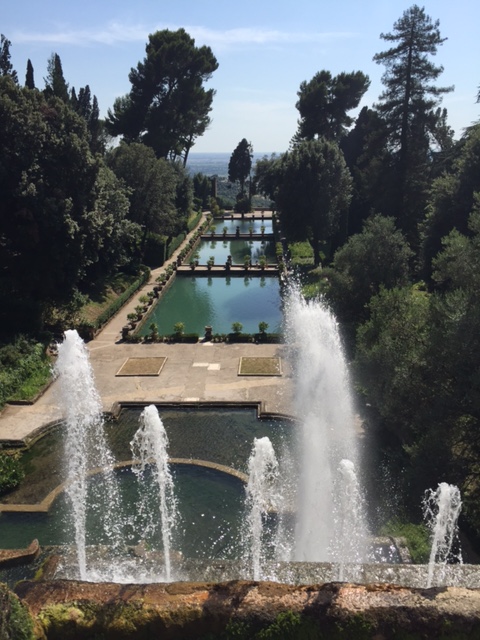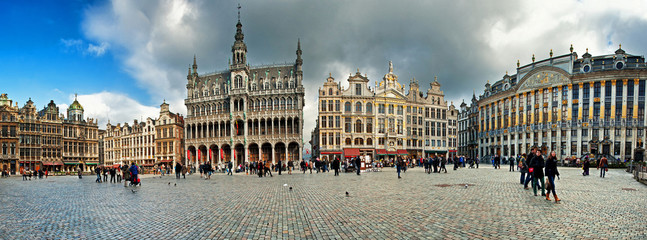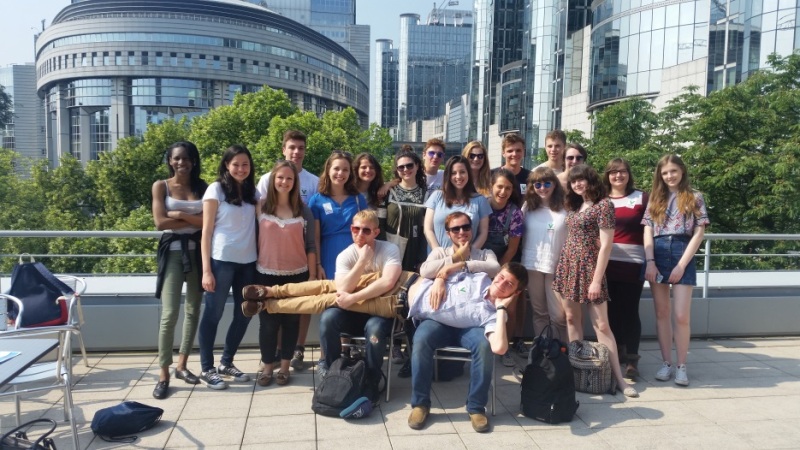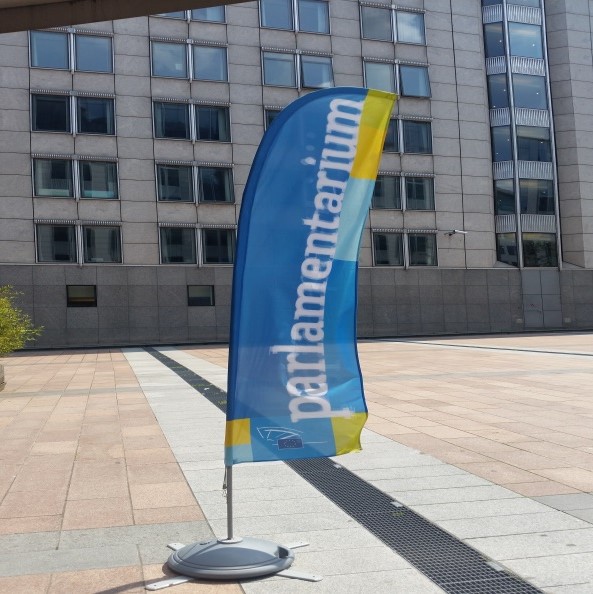Here is an overview of our inaugural trip to Rome (27 June-2 July 2016), the inspiration for which lies in the core values and objectives that underpin Liberal Arts and Natural Sciences at Birmingham. Learning to learn in all kinds of unexpected environments, and from unfamiliar experiences, is crucial to the academic and personal development of our students and there is no better place to learn than Rome!
Day 1
Once the twelve students, from a mixture of year groups, had settled into their apartments and done some independent exploring, we all reconvened at Palazzo Taverna in the grand Salon, for a welcome from Professor Davide Vitali (Director of our host institution, the University of Arkansas Rome Center, and Architect).
This was followed by a 20-minute romp through Rome’s early and legendary foundation and republican history, touching on the political and ethical qualities that classical Romans believed to have been baked into citizen identity by the Founding Fathers. 
Next, we were treated to a whistle-stop lecture by University of Arkansas faculty-member Dr. Ryan Calabretta-Sajder tackling Rome’s identity as a cinematic city, starting with Roman Holiday but ending up with some contemporary visions from Turkish-born director Ferzan Ozpetek.
With that, we retired to a nearby restaurant for food, wine, and conversation about the days ahead.
Day 2
We met with our guide, Agnes Crawford, at the Arch of Constantine. Students were introduced to the powerful ideological and visual connotations of the arch form. The important interplay between monumental form, political ideology, and military might, took a different but complementary shape as we moved to the Flavian Amphitheatre, aka the Colosseum.
This site also helped students to get a sense of the hidden layers which urban markup conceals and reveals. The popular name ‘Colosseum’ was first associated with a gigantic statue of the last Julio-Claudian Emperor, Nero.
What remained of the morning was spent moving up and down the Palatine Hill, discussing how it transformed in the last years of the first century BCE from a pleasant residential zone to the bureaucratic and autocratic heart of a transformed governmental system.
Students saw how one space, the traditional Forum Romanum, transformed from a focus for Rome’s civic self, increasingly became a venue for grandiose monuments and contestations of power which often escalated into street violence and gang warfare, with electoral disruption happening year after year.

The afternoon took us through Rome’s medieval story, moving through the picturesque narrow streets that characterised the city as it re-found its power as a Christian capital and — with the Pilgrim trade developing — began to manifest new kinds of commercial and spiritual authority.
Ship-shaped Tiber Island offered a welcome break for gelato, and some quick facts about the island’s history as a ‘hospital’ zone, such as its ancient dedication to the imported Greek god Aesculapius, a healer.
Trastevere (the place ‘across the Tiber’) was where our students’ apartments were located, close to the charming Piazza San Cosimato, so en route we took in two iconic churches linking the earliest post-classical Christian era with the developing power of the papacy.

We all had some free time then, before reconvening back at Palazzo Taverna for a stand-out lecture by Professor Vitali explaining and exemplifying Rome as a ‘palimpsest’. I was also especially happy to hear Professor Vitali’s assessment of our students: one of the most inquiring, alert, and thoughtful groups he has worked with.
Day 3
We met at the caffe at the Porta San Paolo light rail station before boarding the train for Ostia Antica. Once Rome’s port town, as the Tiber silted up, the town was abandoned and gradually fell into a mysterious quasi-burial. Not as dramatic as Pompeii but with surprisingly similar results in terms of excavated and visible ruins.
We saw dramatic mosaic pavements in some of the town’s public bath-houses and in the so-called Piazza of the Corporations where trading companies had booths and offices decorated with mosaics representing their origins or business.
 We strolled through some luxury townhouses (marvelling at one with its own private toilet!) and played at barmaid-and-customer in a remarkably intact bar, before beginning to make our way back to the sleepy medieval town close to the site, and lunch at L’Alimentari.
We strolled through some luxury townhouses (marvelling at one with its own private toilet!) and played at barmaid-and-customer in a remarkably intact bar, before beginning to make our way back to the sleepy medieval town close to the site, and lunch at L’Alimentari.
 Heading home, we got off the train at EUR to recuperate from Ostia and to think further about what one does with ideologically compromised spaces and structures. EUR was framed as a way for the new regime to build the Rome of the future – a Third Rome.
Heading home, we got off the train at EUR to recuperate from Ostia and to think further about what one does with ideologically compromised spaces and structures. EUR was framed as a way for the new regime to build the Rome of the future – a Third Rome.
The ‘Square Colosseum’ characterises the Italians as ‘a people of poets, of artists, of heroes, of saints, of thinkers, of scientists, of navigators, of boundary-crossers’ (Mussolini, 1935).

That Italian fascist vision of history as a triumphant advance from the foundation of Rome to the rule of Mussolini gains narrative expression in a massive sculptural relief by Publio Morbiducci which drew our brief visit to EUR to a close.
We met up at Palazzo Taverna for our final evening lecture, which introduced the gardens and water-features of the sixteenth-century theme park that is the Villa d’Este, a UNESCO World Heritage site.
Day 4

We met at the Pantheon, a great spot to firm up the city’s palimpsestic quality, looming over the Renaissance Piazza della Rotonda. The Pantheon, so called because it was a temple to ‘all’ the gods, survived relatively intact because it was reused as a church – Santa Maria dei Martiri.
Now, the Pantheon houses tomb-monuments to unify Italy’s first rulers – Victor Emmanuel II and Umberto I – forming an interesting echo to one of the few ‘new’ builds in the historic centre of Rome.
From the Pantheon we took a walking tour, stopping at Bernini’s elephant, and viewing the luminous Filippino Lippi frescoes in the Carafa Chapel of Santa Maria Sopra Minerva.
We thought more about the papal city this morning, and used visits to Sant’Ignazio, with its trip ‘fake’ dome, to discuss counter-reformation politics and the ways in which art and architecture were leveraged to create a sense of perfect union between man and God.
Moving on, we saw the Piazza di Pietra, in which a temple to the posthumously deified emperor Hadrian has been incorporated into what was once the Stock Exchange. We had a gelato stop next, before working our way through the narrow twisting streets that eventually give onto the spectacular Piazza Navona.
The baroque splendours of Bernini’s Fountain of Four Rivers gave us a glimpse of the territorial ambitions of the post-Renaissance world, encompassing the greatest known rivers in a water-feature.
After lunch, we let the students explore, then met again at the Altar of Augustan Peace, a monument excavated on Mussolini’s orders and relocated to a piazza. It was dedicated by the Senate in 13 BCE, in honour of Augustus’ pacification of Spain and Gaul, and the Empire.
The museum, a (fairly) new building designed by starchitect Richard Meier offered an airy, cool space ideally suited to contemplating this masterpiece and also has helpful displays explaining the complex family tree of the Julio-Claudian imperial dynasty.

At the end of the day, we walked across the Tiber, past another classical mausoleum of the emperor Hadrian, to the great street — Via della Concilazione — created by Mussolini to mark the new rapprochement between Vatican and secular authorities.

We had the privilege of entering St. Peter’s through the Holy Door — open for the 2016 Jubilee year. I find myself newly moved by Michelangelo’s Pieta every time, but seeing our students respond to art as a medium of faith and humanity, confronted by the sculpture, was hugely rewarding.
Day 5
We headed for the Villa Adriana and Tivoli, with Francesca Riccardo (expert on architectural design, and UARC faculty member). The lush countryside was a lovely respite from the marble and bustle of Rome.
The Villa is a hot, unshaded place on a late June day, and we ended up lingering at the iconic ‘Canopus’ pool, which gave me an opportunity to talk to students about the traditional ascription of names to parts of the estate. A late imperial biography of Hadrian suggested that he named parts of the villa for sites that particularly thrilled or pleased him, based on his travels around the empire. Canopus, in Egypt, might have recalled the tragic death of his lover Antinous, who drowned in the Nile.
Our minibus took us to Tivoli, where we had a brisk lunch break, meeting up in an hour to start our tour of the Villa d’Este.
The Villa took shape in response to a failed political dream – Cardinal Ippolito d’Este’s unsuccessful attempt to become pope – and in its design he hoped to demonstrate, like Hadrian, that power could reside outside Rome.
Ippolito’s theme for the villa and its elaborately themed gardens was steeped in classical myth. It evoked Hercules’ legendary quest for the Golden Apples of the Hesperides, the dragon he fought to seize them, and the hero’s role as a powerful civiliser.
Visitors are challenged to see in Ippolito’s Tivoli a better-than-life vision of what power looks like, mediated through myth, geopolitics, cutting edge engineering, and the latest in archaeological discovery.

Originally, plantings used scent and sensory nudges to create and give atmosphere to particular routes through the gardens. We were lucky to hear the Fountain of the Organ play for us just before we left, adding melody to what had already been an extraordinary day.
Back in Rome, it was time for a farewell dinner at Ai Spaghettari to discuss the new insights and approaches our visits had enabled.
Day 6
Check-out day was a valuable day to think through what we had gained from the week. Rome is a city of great dissonances as well as enormous beauty, and in these frictions, I think much of the most powerful learning resided.
For our first years, fresh from their core interdisciplinary module on ‘modernity’, the lessons of history manifest in Rome were an excellent postscript to that semester 2 programme of study. We definitely hope to do a similar trip next summer!





































